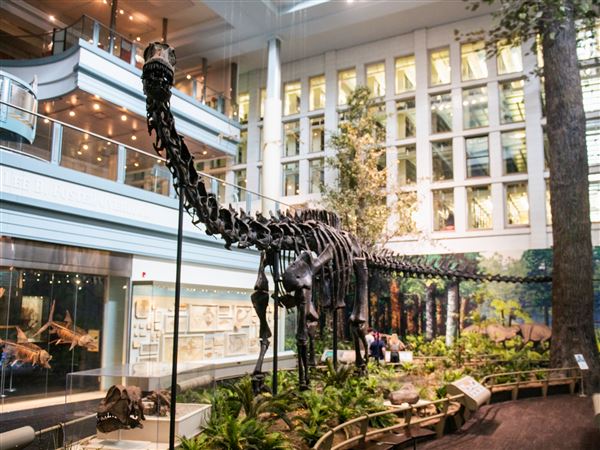The construction of a solar farm on the Nine Mile Run slag heap will complete the final stages of rehabilitation of once-beautiful land — and serve as another reminder that cloudy Pittsburgh isn’t actually incongruous with solar power.
U.S. Rep. Summer Lee helped secure $2 million from the Environmental Protection Agency’s Brownfield Program, closing the financial gap to complete the the $8.35 million remediation project. Construction on the solar farm is slated for 2026.
The hills around Nine Mile Run were once a desirable tract of land: Famed City Beautiful landscape architect Frederick Law Olmsted Jr. once called its meadows “ideal playfields” for enjoying the countryside. But Nine Mile Run instead became a sewer, and then a slag heap for toxic steelmaking byproducts rendered the little creek inhospitable to aquatic life for decades. Today, parts of the slag heap appear like the surface of the moon, surrounded by earthly wilderness, somehow tucked into the urban fabric.
After the Duquesne Slag Company shut down in the 1970s, the next project to breathe life into the area was Summerset at Frick Park, a housing development that cashed in on the area’s hillside vistas and proximity to the city. The rehabilitation of the landscape now continues with this 15-acre solar farm, across Nine Mile Run from Summerset, in the city’s Swisshelm Park neighborhood.
Solar panels are also a surprisingly good bet for this land. Despite being known for its overcast weather, southwest Pennsylvania shouldn’t be written off as a solar energy producer. That’s because solar panels need several simultaneous factors for optimum production: Wind, humidity and air temperature all play a role.
Solar panels operating above 80 degrees or so actually perform worse, making the super-sunny Southwest less attractive than, say, Northern California or Seattle.
And as last year’s huge land buy-ups in Lawrence County for prospective solar farms prove, companies know that Pennsylvania can offer a lot, sunshine-wise. The acres slated for solar power at Nine Mile Run are flat, unwooded and south-facing — serendipitous for generating solar power. While the URA has estimated the site can yield 3 to 5 megawatts of power, that projection may be a bit generous. But even a few megawatts would power hundreds of homes, and feeding the power into the grid will contribute to its resilience.
The average house consumes a little less than 1 megawatt-hour per month, or what a 1 megawatt generator puts out in one hour of operation. The variability of sunshine means solar output is less consistent than fossil fuel output, but batteries can store the energy and distribute it as needed.
These are all positive developments for a tract of land that was once notable for its beauty, which then spent decades as a slag moonscape, and is now slowly returning to a healthy mix of housing, natural space and renewable energy production. And it’s a perfect of example of Ms. Lee’s priorities of renewability and sustainability fitting a need in Pittsburgh, using the residue of traditional industry to build for the future.
First Published: May 29, 2024, 9:30 a.m.


















